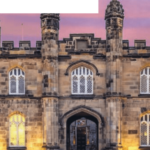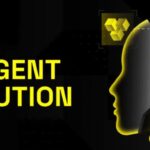Last summer, freelance illustrator Carina Fong was juggling multiple design gigs when a curious message popped up in her inbox. A new client was eager for a “futuristic” book-cover concept—something that merged a neon city skyline with mythological creatures. Under looming deadlines, Fong turned to a generative AI art tool to produce a rough first draft. Within minutes, she had half a dozen concepts ready to refine. As she layered her own finishing touches, she realized she was collaborating with, rather than competing against, the AI.

What’s the Trend? Creative professionals across fields—design, marketing, music, and more—are embracing generative AI tools as a way to spark new ideas or streamline their workflows. No longer confined to the realm of sci-fi, AI-powered platforms can produce vivid imagery, text, melodies, and even short video snippets in seconds. Initially met with skepticism, these tools have gained legitimacy as they become more user-friendly and more closely integrated with existing creative software.
Key Drivers of the Trend
- Accessibility of Tools: From free online AI art generators to subscription-based AI-writing platforms, there is a spectrum of options that cater to beginners and pros alike.
- Rapid Prototyping: AI tools speed up the brainstorming process, allowing creatives to experiment with numerous directions before polishing a final version.
- Growing Acceptance: Mainstream brands are starting to feature AI-driven art or content in their campaigns, raising public awareness and accelerating industry adoption.
Spotlight Examples
- Advertising: Major advertising agencies have started to incorporate AI-generated copy and visuals into storyboards, shaving days off the time it takes to craft a compelling pitch.
- Publishing: Indie authors are experimenting with AI-based image generation to design book covers or visual aids, turning out-of-reach ideas into reality.
- Music and Film: AI composition tools create instrumental soundscapes for short films or trailers, helping content creators experiment with different moods at a fraction of the usual cost and time.
Voices From the Field
- Designers say… “Generative AI doesn’t replace our creativity—it frees us from repetitive tasks so we can focus on the artistry,” explains Fong.
- Critics worry… Some fear an overreliance on AI will homogenize aesthetics or jeopardize job security. However, others argue new creative roles will emerge as the technology’s capabilities expand.
What’s Next?
As generative AI technology evolves, expect to see more integration with professional tools used in animation, web design, and production. Meanwhile, ethical discussions around intellectual property, bias, and authenticity will intensify as AI-generated creations enter the broader cultural landscape. Experts predict collaborations between artists and AI will spur fresh aesthetics that redefine our notion of what’s “handmade” and what’s “machine-made.”
Why It Matters
This trend signifies a watershed moment in how creativity is conceptualized and executed. While AI-assisted design once seemed futuristic, it’s quickly becoming a staple in the creative process. For professionals, it can unlock new forms of expression; for businesses, it offers faster turnarounds and unprecedented versatility. Ultimately, generative AI is not just a novelty—it’s a new co-creator reshaping the world of art and content.










